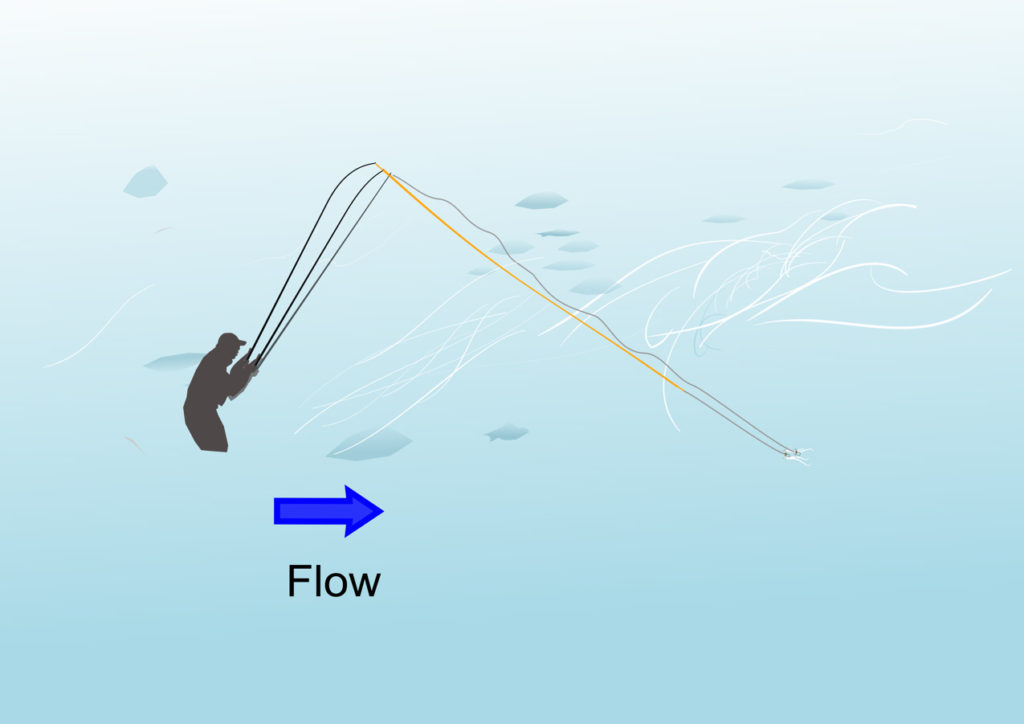Anyone who works their way through the series of free email lessons on fly “manipulation” cannot fail to have their view of trout streams changed a bit.

What I mean by that is – on top of the usual learning curve of mapping where fish naturally tend to lie in the stream- there are other layers you can put on that mental map. One of my favourite “extra layers” is the map of opportunities that are opened up by different presentation methods. And, like everything in the series of lessons, you don’t need to know ALL of it before ANY of it becomes useful. You can start using it to your advantage one piece at a time.
Here’s the deal:
Just learning one or two new presentation tweaks (and where to use them) can open up a great many more areas of a stream that you have just ignored before. Not only that, but you know those presentation tweaks that have been designed to fit nicely into those areas? Well, they can actually help you “colour in” some more bits of your basic map of “where fish like to lie”!!
In other words, if you suddenly start catching fish from a type of current feature that you never fished before because you couldn’t get a fly into it (or your fly was never moving in a way that coaxed fish to grab it from that kind of water) – then you can add some new “prime real estate” markers to your favourite sections of river. You now know a new spot where fish live.
It changes your mental map from “no fish here” to “a chance of fish if they are in the mood for some tome-okuri (pause/feed) fly manipulation”…or whatever the successful method was.
Again if you (or anyone else) has dipped into the free course it is really surprising how the way of thinking about, viewing and tackling flowing water gets absorbed into your DNA (without you noticing it really). And that counts for everything from the “reading the water for Czech nymphing” to “downstream competition-style dry fly tactics” to “gridding to increase the number of induced sink/sweep motions when duo/hopper-dropper fishing” right the way through to the rich variety of ways that you can manipulate, anchor or drift your kebari (or other flies) after learning some of the things that Japanese anglers have developed over the years (you can click here to subscribe to the free emails if you are unfortunate enough to not already be a member).
So, I want to urge you – once you’ve worked through the standard, named manipulation tactics lessons – take a step back and try to place where you now have opportunities instead of either problems (or just a blank, neutral canvas). You might be a bit surprised. But then at the same time can I ask you to also remember that those “named” presentations are just the first rungs on the “fly manipulation” ladder?
More often than not, the top Japanese anglers don’t use manipulations that neatly sit in one pigeon-hole. Instead they are a very fluid blend – cooked up to suit whatever conditions are found on any given day. The key is to have solid basic tactics and to understand the principles behind them.
That way, you are never learning dry facts “parrot fashion”, you take what you like from each lesson (whether that lesson is taught by the stream and the fish or by some scribbled guidelines from the likes of me!). You also never reach the end of any topic (how depressing it would be to run out of new things to discover!) and you are much more adaptable to a wide range of conditions. You don’t need to start from scratch any time you go to a new venue (or if you face very different conditions on a more familiar river). Oh, and you get to go fishing at absolutely every opportunity to try things out.
I think it is nice to view the whole process a bit like the way a gourmet approaches food – knowing the things that they like, but always excited to add a new experience from any available source.
Paul
